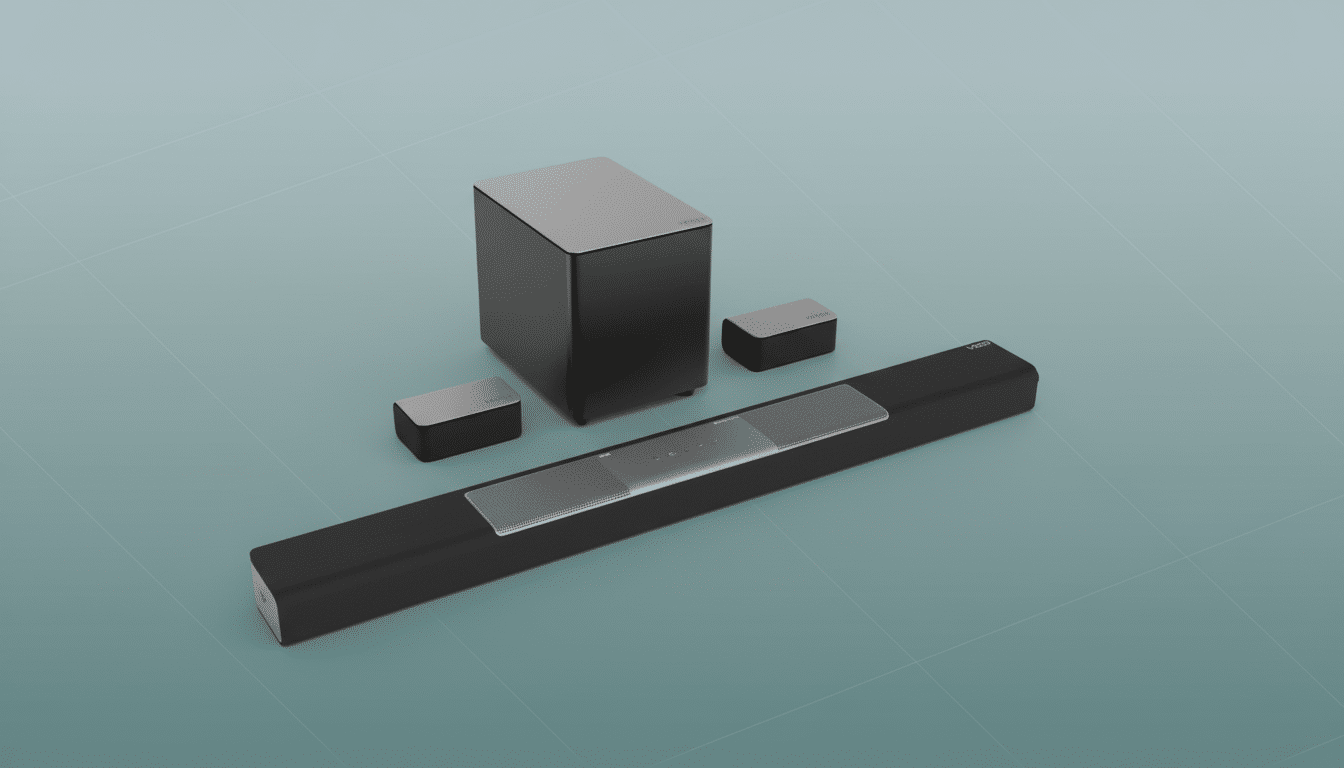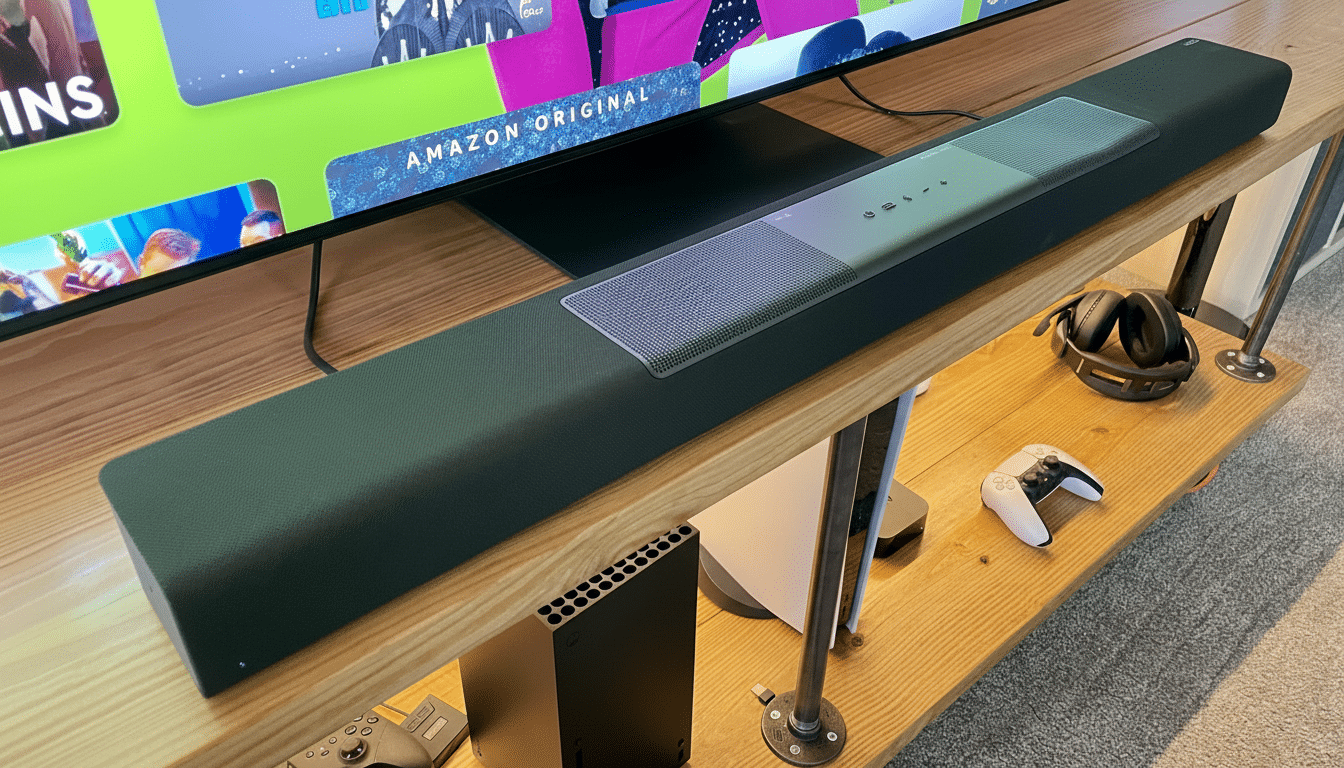When it comes to the movies and TV shows we love, the soundtrack is where it’s at. TV speakers haven’t carried us into the future offered by cinematic sound in rooms across America, but invest enough money in a good soundbar like this one (especially when you catch it on sale) and you’re well on your way.
This guide focuses on the top-value soundbar deals available and how to recognize them, so you can receive room‑shaking lows and clearer dialogue — all without expanding your budget.

Price Tiers That Will Stretch Your Dollar
- Entry level under $150: Count on compact 2.0 or 2.1 models that will beat your set’s built-in TV speakers by a mile. This segment is where models like the Roku Streambar SE or Sony’s basic two‑channel bars tend to graze. You’ll get basic HDMI ARC connectivity and Bluetooth, but not the most immersive experience. Perfect for a bedroom or smaller TV.
- Sweet spot $150 to $300: This is the range where you get the most for your money. Seek out 3.1 models that include a wireless subwoofer, a center channel for dialogue, and virtual surround modes. Some common standouts that tend to receive discounts between 20% and 35%, according to price trackers like Keepa and CamelCamelCamel, are the Vizio M‑Series 5.1 and Polk Signa S4.
- Midrange $300 to $600: You get Dolby Atmos and DTS:X, even more power, and often wireless rear speakers. Samsung’s HW‑Q700C/Q800C or JBL Bar 5.1/7.1 often fall within this range during sales. If you care about big bass and convincing top‑channel effects without going all the way, then this is the lane.
- High‑end $600 and up: If you really love deep bass, the flagship models here have powerful subs as well as dedicated surround speakers and even more sophisticated room correction. Sonos, Bose, Samsung, Sony, and Nakamichi bundles receive the deepest dollar‑off cuts during big sale windows. If you can pull it off, the savings are equivalent to what you’d pay for another sub or pair of rears.
The Details That Will Give You More Bass
The subwoofer is what counts: A powered subwoofer can be the easiest way to achieve that “theater thump.” Even the most modest 6‑ or 8‑inch woofer will outdo a bar’s built‑in drivers. Search for adjustable sub levels and night modes to control rumble in apartments.
eARC and formats: An HDMI eARC port future‑proofs your setup and passes higher‑bitrate Dolby Atmos from apps built into the TV. DTS:X is a nice bonus if you’re the type to spin discs or stream media that includes DTS tracks. The Consumer Technology Association adds that eARC is already prevalent on midrange and high‑end TVs, so it’s worth seeking out with new purchases.
Room tuning is worth it: Auto‑calibration, whether it’s Sonos Trueplay, Samsung SpaceFit, or Sony’s sound field optimization (above), can help put the brakes on boomy bass and sharpen dialogue by effectively “mapping” your room. It’s not a gimmick only; carefully adjusted, that change often becomes the most audibly impactful upgrade after the sub.
Where The Deepest Discounts Are Concealed
Previous‑year models: As new lines come in, retailers blow out inventory. Circana retail data indicates that legacy SKUs represent the bulk of promotional volume in home audio. If the spec sheet still ticks your boxes — Atmos, eARC, wireless sub, etc. — you can save 25% to 45% by buying one generation back.
Bundles and ecosystems: There are brand synergy features such as Samsung Q‑Symphony, LG WOW Orchestra, and Sony Acoustic Center Sync, which unlock extra whistles when you buy a matching TV and bar. Retailers commonly discount these combos more than they subtract in the aggregate off standalone purchases, so you end up pricing out both the sub and rears at a large markdown.
Open‑box and certified refurb: Big‑box retailers and manufacturer outlets will often sell open‑box or refurbished units at discounts of 15% to 30%, return windows and warranties included. If you want high‑end bass at a low‑end price, this route has the potential to be very low‑risk and high‑reward.
Models and packages worth watching during big sales
Vizio M‑Series 5.1: A consistent value leader, thanks to a punchy wireless sub and discrete surrounds. During significant sales, shoppers have spotted the price dipping below $300 repeatedly, propelling it to “starter surround” status.

Samsung HW‑Q700C/Q800C: 3.1.2 Atmos bars with musclebound subs and rock‑solid app control. They punch well above their weight when on sale for movie night, especially if you team them up with a compatible Samsung TV to enable Q‑Symphony.
Polk Signa S4: A drama‑free setup that achieves the right mix of clarity and bass balance at this price, often dipping to the mid‑$200s on sale. Great if you seek to decode Atmos but don’t want extra speakers hanging from the ceiling.
Sonos Beam Gen 2 with Sub Mini: Compared to Sonos’s bread‑and‑butter soundbar, which alone improves listenability and dialogue over the TV, adding a small subwoofer is when you’ll feel that thump. Sonos does occasionally discount substantially, but bundle savings during peak sale times can be meaningful, and multiroom expansion is a bonus.
Nakamichi Shockwafe Pro: If you’re after that cinema feeling, the standalone multi‑speaker kits deliver wall‑trembling bass and actual surrounds. They can see large discounts off their competitive performance‑per‑dollar profile as it is.
Why timing and research matter when hunting deals
Futuresource Consulting believes tens of millions of soundbars ship globally per year. Double‑digit growth in Atmos‑capable soundbars is expected as streaming platforms increase their spatial mixes. Translation: competition is stiff, and promotions are occurring often — but not all are created equal.
Price‑history tools and community trackers such as Keepa and Slickdeals help confirm whether a markdown is really a low. Cross‑check retailer “list prices” against manufacturer MSRPs to avoid inflated anchors. If a sale is not matching historic lows and isn’t throwing in rears or a sub, you may want to wait.
Practical setup and buying tips to check before purchase
- Match the width of the bar to your TV; make sure it doesn’t block the TV’s IR sensor.
- Check that your TV has an ARC or eARC label on the HDMI input.
- Give dialogue intelligibility the priority status it deserves with a dedicated center channel.
- If you have neighbors, choose a model that has night mode and bass management.
- If you’re invested in a particular ecosystem — AirPlay, Chromecast, Alexa, or Google Assistant — make sure it’s built in.
Put in that homework, and the right soundbar deal will do just what you want it to: deepen the bass, sharpen the voices, and leave your wallet rattling gently in your pocket afterward.

